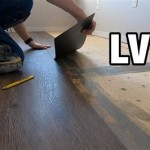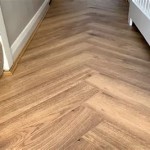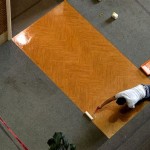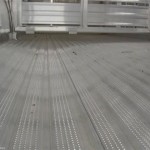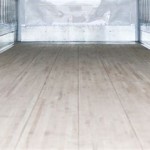Thin Brick Veneer: A Versatile Flooring Solution from Floor & Decor
Thin brick veneer has emerged as a popular flooring material, offering the aesthetic appeal of traditional brick without the weight and structural requirements. Floor & Decor, a leading retailer of hard surface flooring, provides a wide selection of thin brick veneer options suitable for various residential and commercial applications. This article will explore the advantages of thin brick veneer, its installation process, and considerations for selecting the right product from Floor & Decor.
Thin brick veneer is a manufactured product designed to mimic the appearance of full-size bricks. It is typically made from clay, shale, or concrete and is cut to a thickness of approximately ½ to ¾ inches. This reduced thickness makes it significantly lighter and less expensive than traditional brick, enabling its use in areas where the weight of full brick would be prohibitive. The versatility of thin brick veneer extends to its application, including interior and exterior walls, fireplaces, backsplashes, and, importantly, flooring.
Key Advantages of Thin Brick Veneer Flooring
Several factors contribute to the growing popularity of thin brick veneer as a flooring choice. These advantages encompass aesthetic appeal, durability, and ease of installation and maintenance.
Aesthetic Appeal: The primary draw of thin brick veneer flooring is its authentic, rustic appearance. It provides a timeless and classic look that complements a range of architectural styles, from industrial lofts to farmhouse-inspired interiors. The natural variations in color and texture inherent in brick create a visually interesting surface that adds character and warmth to any space. Floor & Decor offers a variety of brick styles, colors, and textures, allowing homeowners and designers to achieve a specific aesthetic goal. From reclaimed brick looks to sleek, modern options, the selection caters to diverse preferences.
Durability and Longevity: While thinner than traditional brick, thin brick veneer is a durable flooring option. When properly installed and sealed, it can withstand heavy foot traffic, resist scratches, and maintain its appearance for many years. The inherent properties of brick, such as its resistance to moisture and fire, contribute to its long-term performance. Floor & Decor's selection includes products specifically designed for flooring applications, ensuring they meet the required durability standards. Furthermore, the colorfastness of high-quality thin brick veneer ensures that the flooring will not fade over time, even in areas with direct sunlight exposure.
Ease of Installation and Maintenance: Compared to installing a full brick floor, thin brick veneer is significantly easier and faster to install. Its reduced weight eliminates the need for specialized structural support, and its thin profile allows it to be applied to existing subfloors with minimal preparation. Installation typically involves adhering the individual brick pieces to the subfloor using a suitable mortar or thin-set adhesive. Grouting is then applied to fill the joints between the bricks, creating a cohesive and finished surface. Maintenance is also relatively straightforward, requiring regular sweeping or vacuuming and occasional cleaning with a mild detergent. The sealed surface resists stains and spills, making it easy to maintain a clean and attractive appearance. Floor & Decor often provides guidance and resources on proper installation techniques and maintenance procedures, ensuring a successful outcome.
Selecting the Right Thin Brick Veneer from Floor & Decor
Choosing the appropriate thin brick veneer for a flooring project involves considering several factors, including the intended application, budget, and aesthetic preferences. Floor & Decor offers a diverse range of options, and understanding these considerations is crucial for making an informed decision.
Application and Traffic Levels: The intended use of the space will influence the type of thin brick veneer selected. High-traffic areas, such as entryways and kitchens, require more durable options with a higher abrasion resistance. Floor & Decor typically provides information on the suitability of each product for different traffic levels. For example, some thin brick veneer products are specifically designed for commercial applications, while others are better suited for residential use. The composition of the brick, its density, and the quality of the surface finish all contribute to its ability to withstand wear and tear. It's important to consider the potential for spills and moisture exposure as well, particularly in kitchens and bathrooms, and choose a product that is resistant to these elements.
Aesthetic Preferences and Design Considerations: The desired aesthetic will play a significant role in the selection process. Floor & Decor offers a wide range of brick styles, colors, and textures to match various design schemes. Options include traditional red brick, tumbled brick, painted brick, and more. Consider the overall color palette of the space and choose a brick color that complements the existing décor. The texture of the brick can also impact the overall look and feel of the floor. Smooth-faced bricks create a more contemporary appearance, while textured bricks provide a rustic and aged look. The size and shape of the brick can also be varied to create different patterns and visual effects. For instance, herringbone or running bond patterns can add visual interest to a room.
Budget and Installation Costs: The cost of thin brick veneer flooring will vary depending on the style, quality, and quantity of materials required. Floor & Decor offers products at different price points, allowing homeowners to find options that fit their budget. In addition to the cost of the brick veneer itself, it's also important to factor in the cost of installation materials, such as mortar, grout, and sealant. Professional installation can add to the overall cost, but it can also ensure a high-quality and durable result. It's advisable to obtain quotes from multiple contractors and compare their prices before making a decision. DIY installation can save on labor costs, but it requires a certain level of skill and experience. Floor & Decor may offer installation services or recommend qualified installers in the area.
Installation Process of Thin Brick Veneer Flooring
Proper installation is crucial for ensuring the longevity and performance of thin brick veneer flooring. While DIY installation is possible, it requires careful planning and execution. Professional installation is recommended for those without experience or for more complex projects.
Subfloor Preparation: The subfloor must be clean, level, and structurally sound before installing thin brick veneer. Any imperfections, such as cracks or unevenness, must be addressed to ensure a smooth and even surface. Concrete subfloors should be cleaned and primed to promote adhesion. Wood subfloors should be reinforced if necessary and covered with a layer of cement backer board to provide a stable and moisture-resistant base. Proper preparation is essential for preventing future problems, such as cracking or detachment of the brick veneer.
Adhesive Application: A suitable mortar or thin-set adhesive should be used to adhere the thin brick veneer to the subfloor. The adhesive should be applied evenly using a notched trowel, ensuring full coverage of the back of each brick. The type of adhesive used will depend on the type of subfloor and the specific recommendations of the brick manufacturer. It's important to follow the manufacturer's instructions carefully to ensure proper adhesion and prevent future problems. The adhesive should be allowed to cure completely before grouting.
Grouting and Sealing: Once the adhesive has cured, the joints between the bricks should be filled with grout. The grout should be applied using a grout float, ensuring that all joints are completely filled. Excess grout should be removed with a damp sponge. The type of grout used will depend on the aesthetic preferences and the intended use of the space. Epoxy grout is more resistant to stains and moisture than cement-based grout and is often recommended for kitchens and bathrooms. After the grout has cured, the entire surface should be sealed to protect it from stains and moisture. A penetrating sealer is typically used, which soaks into the brick and grout and creates a water-resistant barrier. Regular resealing is recommended to maintain the appearance and durability of the flooring.
Rushmore Thin Brick Panel Floor And Decor

Rushmore Thin Brick Panel Floor And Decor
Thin Brick Floor And Decor
Boston Mill Thin Brick Panel Floor Decor
Castle Gate Thin Brick Flats Floor And Decor
Thin Brick Floor And Decor
Brick Floor Decor

New House Brick Floors Of Hargrove

Msi Noble Red 7 55 In X 2 25 0 50 Clay Thick Thin Brick Box Of Ctl Nobred2x7 N The Home Depot

How To Install Herringbone Brick Floor Tile Jenna Sue Design
Related Posts


